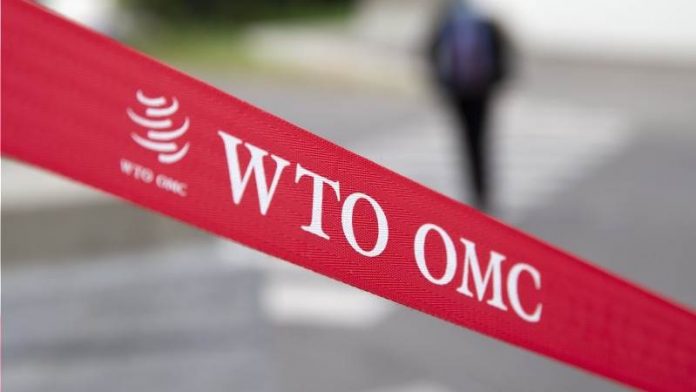The African Import-Export Bank predicts a sharp decline in world trade in 2020. African trade is also expected to decline, but rebound from a low in April. Afreximbank issues a series of recommendations in favor of intra-African trade.
Afreximbank published its Annual Africa Trade Report on December 15, 2020. This report reviews trade and economic developments in Africa, in a year 2019 dominated by trade wars and rising tariffs that led to a sharp slowdown in world trade.
This situation has been made worse by the Covid-19, and as a result, after falling 2.86% last year, world trade is expected to contract 9.2% in 2020.
The Africa Trade Annual Report offers an in-depth study of informal cross-border trade (ITC). It is the first time that an attempt has been made to measure in detail the volume and composition of informal trade.
Despite regional variations, the report underscores the importance of the CTI for job creation and income generation, estimating that it provides a source of income for around 43% of Africa’s population and is dominated by women.
In Southern Africa (the SADC bloc), women account for around 70% of informal cross-border trade. In West Africa, food and agricultural products constitute 30% of intra-regional trade.
Formalize cross-border trade!
“Even though informal cross-border trade represents an important part of domestic purchases and has become a major source of income to maintain household consumption levels, its contribution to GDP is hardly recognized,” comments the president of Afreximbank, Benedict Oramah.
Using evidence-based data to measure ITC, the report highlights the transformations needed to develop intra-African trade and shift trade into the formal sector.
For example, removing technical and non-tariff barriers to trade, as well as streamlining processes, improving access to finance and creating digitized payment systems that reduce risk. All of this will allow traders to develop and move up the value chain. In informal cross-border trade, transactions take place only in cash.
Afreximbank’s recommendations will become even more relevant with the launch of the African Continental Free Trade Area. The bank, for its part, is setting up its Pan-African Payments and Settlements System (PAPSS) to enable buyers and sellers to transact in local currency, while reducing the risk associated with cash transactions.
Retreat of the European Union, surge from Asia!
Between January and August 2020, Africa’s merchandise trade contracted 12% from the same period last year, with April and May posting the largest declines. Prospects for 2021 are much brighter: Africa’s trade is expected to rebound significantly, in the wake of the recovery in global economic activity and increased demand for African exports.
The share of African exports to Asia increased to 30.8% in 2019, while the European Union’s share fell to 24.6%. China and India were the main drivers of the boom in trade between Africa and Asia, with the two countries absorbing 27% of Africa’s total merchandise exports in 2019.
A similar trend is observed in the origin of imports from African countries. Although the EU has always been the main source, its share of African imports has steadily declined and Asia now rivals Europe.
The value of total intra-African trade decreased by 5.2% in 2019, reducing its share in African trade, which fell from around 15% in 2018 to 14.4% in 2019.
A high weight of raw materials!
South Africa is the country that contributes the most to intra-African trade, with 23.1% of total trade in 2019. DR Congo has consolidated its position: with a share of 10.4%, it has become the second largest player in intra-African trade. Despite a 4.7% drop in trade in value terms, Nigeria’s share has remained constant at around 7%, placing the country third in intra-African trade.
The weight of raw materials in the value of African exports is very high. Oil and gas, despite a significant drop in prices, still accounted for 37% of total African exports in 2019. Afreximbank, through its African Commodity Index, a weighted index that tracks Africa’s thirteen major commodities, has shown a recovery V-shaped between February and October. Although the index is about 30% lower than it was in December 2018 and 20% lower than it was at the start of the year.
Reference: https://www.shine.cn/biz/economy/2010077365/































